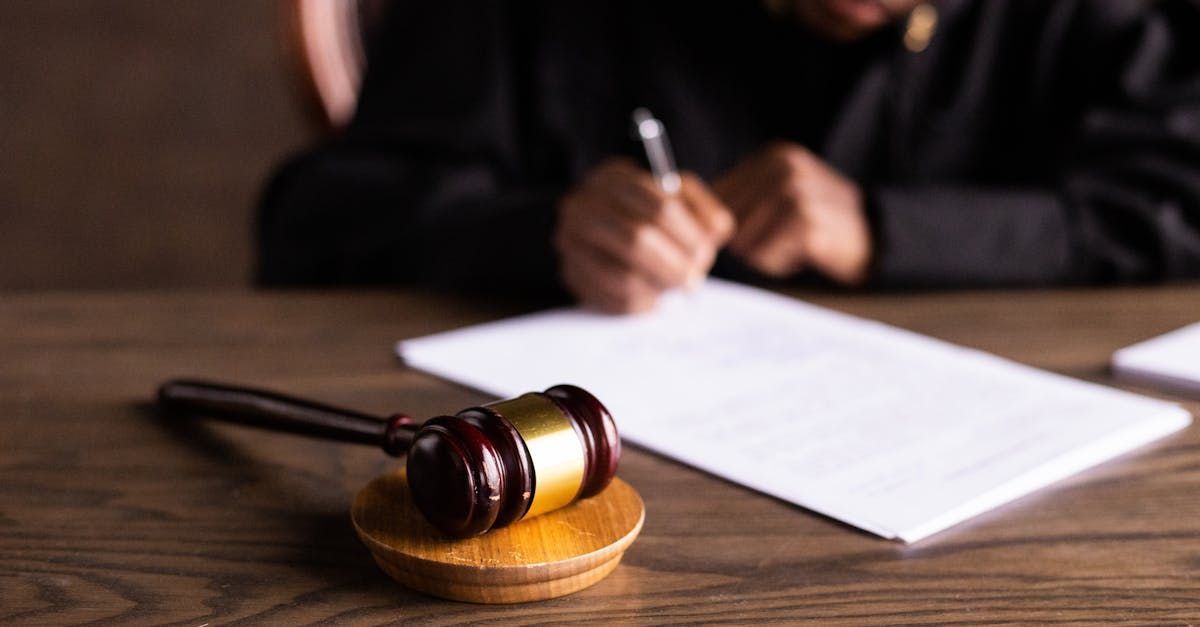What To Do If I Got Injured Working At A Construction Site
What To Do if You Get Injured Working at a Construction Site
Getting injured at work can negatively impact many parts of your life. From cuts and broken bones to life-changing impairments, compensation is available for a range of workplace accidents. If you've suffered an injury and don't know where to turn, it's important to get professional advice from legal experts. Let's take a detailed look at everything you need to know, from practical steps during the early stages to understanding regulations and moving forward with worker's compensation and personal injury claims.
Steps to take if an accident occurs
If you suffer or witness an accident at your workplace, you need to take appropriate measures to ensure all parties' personal safety and financial protection. The following steps should be followed immediately:
1. Seek medical care
When an injury occurs at a construction site, you need to seek medical help right away. The type of support depends on the injury and its severity. While some minor accidents can be treated successfully with medical kits, major accidents often require the help of ambulances, medical professionals, and other emergency services. Treating the injured party is the number one priority after any workplace accident.
2. Secure the site
Once the person has been supported, and medical professionals have been notified, it's important to secure the site and follow appropriate health and safety protocols. The details of this step depend on the accident and its severity, along with site-specific considerations regarding your workplace. It's essential to secure the site to prevent additional injuries and report the accident to supervisors and relevant stakeholders.
3. Take names and photos
Workplace accidents are stressful events that have a psychological impact on everyone involved. Details quickly get lost, and memories are prone to errors in the days and weeks that follow. Once the person has been treated, and the site has been stabilized, it's important to note down the names of all witnesses and take photos of the injuries and accident location. This information may be valuable when parties are making legal claims.
4. Contact a legal team
If you've been injured at a construction site, you may be able to receive compensation. The industry has adopted specific regulations, and there are recognized legal avenues to follow. There are two possible courses of action for construction-related injuries: worker's compensation claims and personal injury claims. If you've suffered an accident and want to get the compensation you deserve, you need a legal team to represent your interests.
Liability and regulations
The construction industry in the United States is subject to safety regulations under the Occupational Safety and Health Act of 1970. This act has been adopted by most states and is relevant for most construction sites. While it's not always easy to identify the person responsible for ensuring compliance, the regulatory body itself is well-established.
These laws focus on all types of construction injuries, from cuts and burns to broken bones, blindness, concussion, paralysis, traumatic brain injuries, and many more. Across the country, a number of organizations are responsible for site assessment and remediation regarding these laws. Liable entities may include contractors, manufacturers, engineers, and construction managers, depending on the accident.
The construction industry in the United States is subject to safety regulations under the Occupational Safety and Health Act of 1970. This act has been adopted by most states and is relevant for most construction sites. While it's not always easy to identify the person responsible for ensuring compliance, the regulatory body itself is well-established.
These laws focus on all types of construction injuries, from cuts and burns to broken bones, blindness, concussion, paralysis, traumatic brain injuries, and many more. Across the country, a number of organizations are responsible for site assessment and remediation regarding these laws. Liable entities may include contractors, manufacturers, engineers, and construction managers, depending on the accident.
Worker's compensation vs. personal injury
It's important to comprehend the difference between a worker's compensation claim and a personal injury lawsuit. The biggest difference is the concept of 'fault,' with a personal injury claim based on fault and a worker's compensation case implying no-fault. This has a significant impact on the legal process and its outcome, as does the definition of employees and the type of events that are compensated.
What is worker's compensation?
Worker's compensation claims are based on a no-fault system. If an employee is injured on-site or during their regular duties, they are entitled to receive payment regardless of who, if anyone, was at fault. This arrangement is designed to cover almost any injury that takes place at work, as long as the person involved is an employee. It does not depend on the duties of the employer and whether they failed to provide appropriate safe working conditions.
If successful, these claims are designed to cover some of the damages experienced in the form of financial compensation. This includes weekly cost-of-living payments, medical bills, permanent impairment, and vocational rehabilitation. However, worker's compensation does not provide money for pain and suffering or loss of lifestyle. In addition, worker's compensation claims often involve less money than personal injury cases.
In most situations, worker's compensation eliminates the ability to file a personal injury claim. However, the following situations are exceptions or present alternative legal avenues:
- Injuries due to intentional conduct may be covered by a personal injury lawsuit.
- Injuries due to a third party may be covered by a personal injury lawsuit.
- Injuries due to a defective product may be covered by product liability.
- Injuries due to a toxic substance may be covered by a toxic tort lawsuit.
- A lack of worker's compensation insurance may give you the right to sue or collect from a state fund.
What is a personal injury lawsuit?
Personal injury claims involve a fault-based system. If an employee is injured on-site or during their regular duties, they are only entitled to receive a payment if someone was deemed to be at fault. This arrangement depends on whether or not the employer provided appropriate safe working conditions. While worker's compensation claims are restricted to company employees, personal injury lawsuits can be filed by anyone.
You can't file a personal injury claim for most workplace accidents. This is because the worker's compensation program was specifically developed to cover these events in a way that protects employers from potential bankruptcy. However, personal injury claims can be an option if they involve a valid third party. For example, a construction worker injured by a negligent driver while moving between worksites may be able to file a personal injury lawsuit against the driver.
The person involved must be held negligent to recover damages in a personal injury claim. The injured party is entitled to recover all of their damages, including intangible factors related to lifestyle issues. Damages include current and future medical expenses, lost earnings and earning capacity, permanent impairment, pain and suffering, and loss of enjoyment of life.
Injured parties who file a personal injury lawsuit can also file a worker's compensation claim without proof of negligence. This can be a great way to receive immediate income during an uncertain and long-winded legal process. However, people can't be paid twice for the same expenses. For example, if worker's compensation and personal injury claims pay for the same medical bills, the former will typically be reimbursed.
If you've suffered an accident at a construction site, you must get the compensation you deserve. If you need professional advice or someone dependable fighting in your corner, contact a legal team you can trust.











